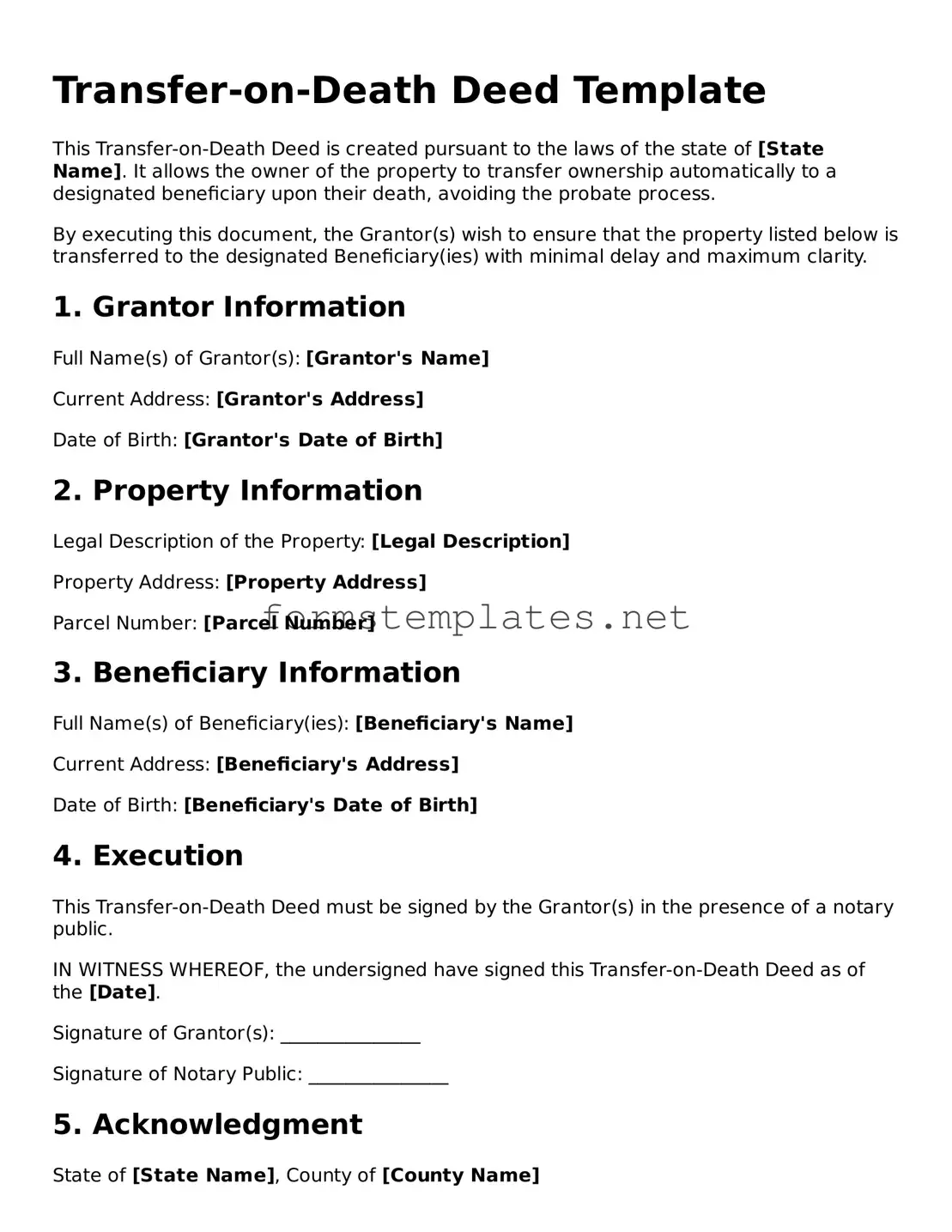Transfer-on-Death Deed Template
This Transfer-on-Death Deed is created pursuant to the laws of the state of [State Name]. It allows the owner of the property to transfer ownership automatically to a designated beneficiary upon their death, avoiding the probate process.
By executing this document, the Grantor(s) wish to ensure that the property listed below is transferred to the designated Beneficiary(ies) with minimal delay and maximum clarity.
1. Grantor Information
Full Name(s) of Grantor(s): [Grantor's Name]
Current Address: [Grantor's Address]
Date of Birth: [Grantor's Date of Birth]
2. Property Information
Legal Description of the Property: [Legal Description]
Property Address: [Property Address]
Parcel Number: [Parcel Number]
3. Beneficiary Information
Full Name(s) of Beneficiary(ies): [Beneficiary's Name]
Current Address: [Beneficiary's Address]
Date of Birth: [Beneficiary's Date of Birth]
4. Execution
This Transfer-on-Death Deed must be signed by the Grantor(s) in the presence of a notary public.
IN WITNESS WHEREOF, the undersigned have signed this Transfer-on-Death Deed as of the [Date].
Signature of Grantor(s): _______________
Signature of Notary Public: _______________
5. Acknowledgment
State of [State Name], County of [County Name]
On this [Date], before me, a notary public, personally appeared [Grantor's Name], known to me (or proven to me on the basis of satisfactory evidence) to be the person(s) whose name(s) is/are subscribed to the within instrument and acknowledged to me that he/she/they executed the same.
Witness my hand and official seal.
__________________________
Notary Public
My Commission Expires: _______________
